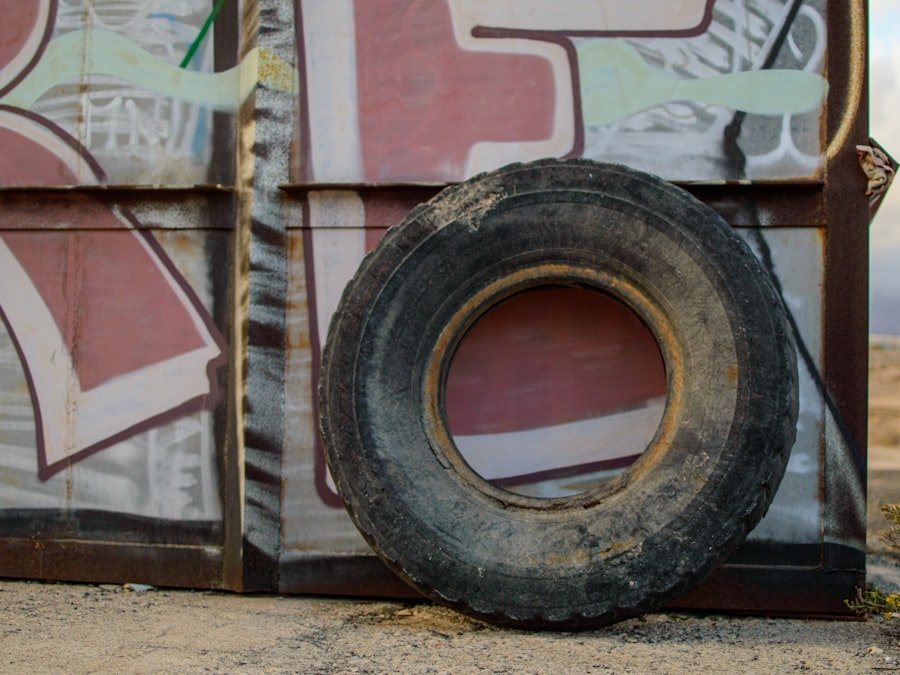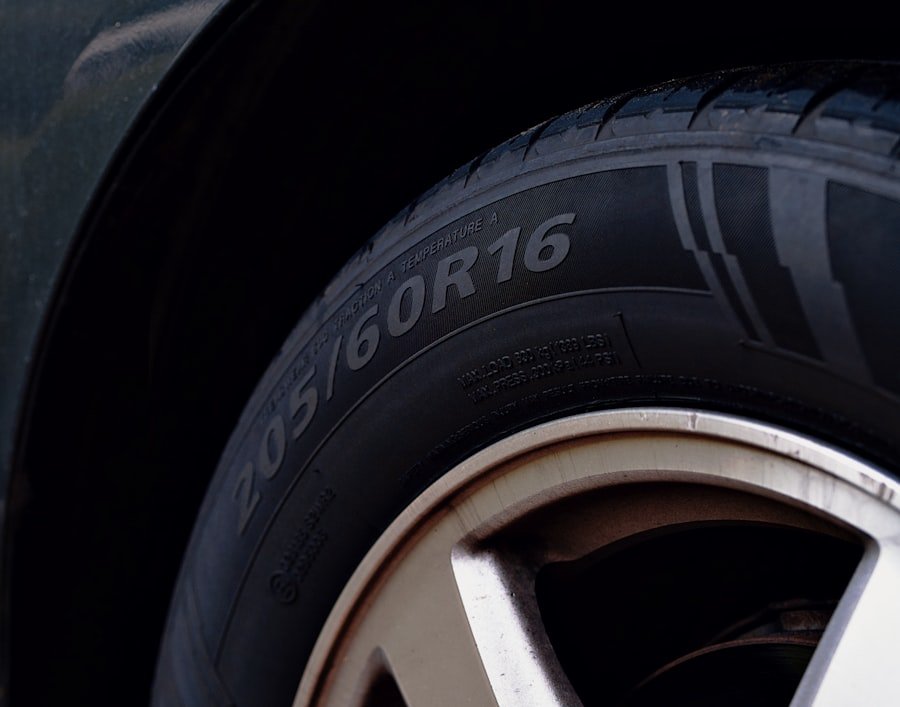Uneven tire wear is a common issue that many vehicle owners encounter, yet it often goes unnoticed until it leads to more significant problems. Tires are a critical component of any vehicle, serving as the only point of contact between the car and the road. When tires wear unevenly, it can affect not only the performance and safety of the vehicle but also its fuel efficiency and overall lifespan.
Understanding the causes of uneven tire wear is essential for maintaining optimal vehicle performance and ensuring a safe driving experience. The patterns of uneven tire wear can manifest in various ways, including bald spots, cupping, or excessive wear on one side of the tire. These patterns can provide valuable insights into underlying issues with the vehicle’s alignment, suspension, or driving habits.
By identifying and addressing these issues early on, drivers can extend the life of their tires, improve handling, and enhance safety on the road. This article will delve into the various factors contributing to uneven tire wear, providing a comprehensive understanding of how to prevent it.
Key Takeaways
- Uneven tire wear can be caused by various factors such as overinflation, underinflation, misaligned wheels, worn suspension components, improper wheel balancing, aggressive driving habits, improper tire rotation, camber, caster, and toe angles, worn or damaged tires, and driving on rough or uneven surfaces.
- Overinflation and underinflation of tires can lead to uneven tire wear, affecting the center or edges of the tire tread respectively.
- Misaligned wheels can cause uneven tire wear, with symptoms such as the vehicle pulling to one side or the steering wheel vibrating.
- Worn suspension components, such as shocks and struts, can lead to uneven tire wear and should be inspected regularly.
- Improper wheel balancing can cause uneven tire wear, leading to vibrations and a decrease in overall vehicle performance. Regular tire rotation and proper wheel alignment can help prevent uneven tire wear.
Overinflation and Underinflation
Tire pressure plays a crucial role in tire performance and longevity. Both overinflation and underinflation can lead to uneven tire wear, albeit in different ways. Overinflated tires tend to wear more in the center of the tread because they are inflated beyond the manufacturer’s recommended pressure.
This excessive pressure causes the tire to bulge in the middle, leading to increased contact with the road surface at the center while reducing contact on the edges. As a result, drivers may notice that the center tread wears down faster than the outer edges, compromising traction and handling. Conversely, underinflated tires can lead to excessive wear on the outer edges of the tread.
When tires are not inflated to the proper level, they tend to flex more than intended during driving. This flexing causes increased heat buildup and greater surface area contact with the road on the outer edges, leading to accelerated wear in those areas. Additionally, underinflated tires can negatively impact fuel efficiency, as they require more energy to roll.
Regularly checking tire pressure and maintaining it within the recommended range is essential for preventing uneven wear and ensuring optimal performance.
Misaligned Wheels

Wheel alignment is another critical factor that can contribute to uneven tire wear. When a vehicle’s wheels are misaligned, they do not point in the same direction or are not perpendicular to the ground. This misalignment can result from various factors, including hitting potholes, curbs, or other road hazards.
Misaligned wheels can cause tires to drag or scrub against the road surface at an angle, leading to uneven wear patterns. The most common signs of misalignment include a vehicle pulling to one side while driving straight or a steering wheel that is off-center when driving straight. If left unaddressed, misalignment can lead to significant tire wear and may also affect other components of the vehicle’s suspension system.
Regular alignment checks are essential, especially after any significant impact or when new tires are installed.
Worn Suspension Components
| Component | Signs of Wear | Replacement Interval |
|---|---|---|
| Shock Absorbers | Leaking fluid, excessive bouncing | Every 50,000 miles |
| Struts | Noise over bumps, uneven tire wear | Every 50,000 miles |
| Control Arms | Loose steering, uneven tire wear | Every 100,000 miles |
The suspension system of a vehicle plays a vital role in maintaining proper tire contact with the road surface. Worn suspension components, such as shocks, struts, and bushings, can lead to uneven tire wear by failing to keep tires firmly planted on the ground. When suspension parts are worn or damaged, they may not absorb bumps and shocks effectively, causing tires to bounce or tilt during driving.
This irregular contact with the road can lead to uneven wear patterns. For instance, if a shock absorber is worn out, it may allow excessive movement of the wheel during driving conditions, leading to increased wear on one side of the tire. Additionally, worn bushings can cause misalignment issues that further exacerbate uneven tire wear.
Regular inspections of suspension components are crucial for identifying signs of wear and ensuring that they are functioning correctly. Replacing worn parts promptly can help maintain even tire wear and improve ride quality.
Improper Wheel Balancing
Wheel balancing is another essential aspect of tire maintenance that can significantly impact tire wear. When wheels are not properly balanced, it can lead to vibrations during driving that cause uneven wear on tires. Imbalances often occur due to uneven weight distribution across the wheel assembly or when tires are mounted incorrectly.
These vibrations can cause specific areas of the tire tread to experience excessive friction against the road surface. Drivers may notice symptoms of improper wheel balancing through vibrations felt in the steering wheel or seat while driving at certain speeds. Over time, these vibrations can lead to uneven tread wear patterns such as cupping or scalloping on the tire surface.
To prevent these issues, it is essential to have wheels balanced whenever new tires are installed or rotated. Regular checks for balance can help ensure a smooth ride and prolong tire life.
Aggressive Driving Habits

Aggravating Existing Issues
Aggressive driving can also exacerbate existing problems, such as misalignment or suspension issues, further accelerating uneven tire wear. Drivers who frequently engage in high-speed maneuvers or abrupt changes in speed should be particularly mindful of their tire condition.
The Benefits of Smoother Driving
On the other hand, adopting smoother driving habits can have numerous benefits. Not only does it enhance safety, but it also promotes even tire wear and extends overall tire life.
Key Takeaways
By being aware of the impact of driving habits on tire wear, drivers can take steps to mitigate uneven wear patterns and extend the life of their tires.
Improper Tire Rotation
Tire rotation is a critical maintenance practice that helps ensure even wear across all four tires.
Failing to rotate tires regularly can lead to significant differences in tread depth between front and rear tires, resulting in uneven wear.
Most manufacturers recommend rotating tires every 5,000 to 7,500 miles or according to specific guidelines outlined in the owner’s manual. The rotation pattern may vary depending on whether the vehicle has directional or non-directional tires and whether it is front-wheel drive or rear-wheel drive. By adhering to a regular rotation schedule, drivers can promote even tread wear across all tires and enhance overall vehicle performance.
Camber, Caster, and Toe Angles
The alignment angles of a vehicle’s wheels—camber, caster, and toe—are critical for ensuring proper handling and even tire wear. Camber refers to the tilt of the wheels when viewed from the front; positive camber means the top of the wheel tilts outward while negative camber means it tilts inward. Excessive positive or negative camber can lead to uneven tire wear on one side of the tread.
Caster angle refers to the angle of the steering axis when viewed from the side; it affects steering stability but does not directly impact tire wear unless it is significantly out of specification. Toe angle refers to whether the front wheels point inward (toe-in) or outward (toe-out) when viewed from above; improper toe settings can cause tires to scrub against the road surface as they roll forward. Regular alignment checks that assess these angles are essential for maintaining proper handling characteristics and preventing uneven tire wear.
Adjustments should be made based on manufacturer specifications to ensure optimal performance.
Worn or Damaged Tires
Tires themselves can also be a source of uneven wear if they are worn out or damaged. Tires that have reached their treadwear indicators or exhibit visible signs of damage such as cuts, bulges, or punctures should be replaced immediately. Worn tires not only compromise traction but also increase the risk of blowouts or loss of control while driving.
Additionally, damaged tires may not make consistent contact with the road surface due to irregularities in their shape or structure. This inconsistency can lead to uneven tread wear patterns that further exacerbate existing issues with alignment or suspension components. Regular inspections for signs of damage or excessive wear are crucial for maintaining safe driving conditions and prolonging tire life.
Driving on Rough or Uneven Surfaces
The type of terrain on which a vehicle is driven can significantly impact tire wear patterns. Driving frequently on rough or uneven surfaces—such as gravel roads, pothole-ridden streets, or off-road conditions—can accelerate tire degradation and lead to uneven wear. The constant jarring and bouncing associated with these surfaces place additional stress on tires and suspension components.
Moreover, rough surfaces can exacerbate existing alignment issues by causing further misalignment over time due to impacts from rocks or debris. Drivers who regularly navigate challenging terrains should be particularly vigilant about monitoring their tire condition and addressing any signs of uneven wear promptly.
Conclusion and Tips for Preventing Uneven Tire Wear
To prevent uneven tire wear effectively, drivers should adopt a proactive approach that includes regular maintenance checks and adjustments based on their driving habits and conditions. Key practices include maintaining proper tire pressure by checking it monthly; scheduling regular wheel alignments—especially after hitting potholes or curbs; rotating tires according to manufacturer recommendations; and inspecting suspension components for signs of wear. Additionally, adopting smoother driving habits can significantly reduce stress on tires and promote even tread wear over time.
By being mindful of these factors and addressing any issues promptly, drivers can enhance their vehicle’s performance while ensuring safety on the road.
If you are experiencing uneven tire wear, it may be helpful to check out an article on top floor epoxy picks for 2025. Properly maintaining your garage floor can help prevent tire damage and ensure a smoother driving experience. Additionally, maximizing your outdoor kitchen with tips for effective use, as discussed in this article, can help protect your tires from debris and other damaging elements when working on your vehicle outdoors.
FAQs
What causes uneven tire wear?
Uneven tire wear can be caused by a variety of factors, including improper tire inflation, misaligned wheels, worn suspension components, and driving habits such as aggressive cornering or braking.
How can I prevent uneven tire wear?
To prevent uneven tire wear, it’s important to regularly check and maintain proper tire inflation, have your wheels aligned and balanced as needed, and replace worn suspension components. Additionally, practicing smooth driving habits can help extend the life of your tires.
What are the potential dangers of driving with unevenly worn tires?
Driving with unevenly worn tires can lead to reduced traction and handling, increased risk of hydroplaning, and decreased braking performance. This can compromise the safety of your vehicle and increase the likelihood of accidents.
How often should I have my tires checked for uneven wear?
It’s recommended to have your tires checked for uneven wear during regular maintenance intervals, such as during oil changes or tire rotations. Additionally, it’s important to visually inspect your tires for signs of uneven wear on a regular basis.
Can I fix uneven tire wear myself, or do I need to take my car to a professional?
While some minor tire wear issues can be addressed by adjusting tire pressure or rotating the tires, more significant issues such as wheel misalignment or worn suspension components should be addressed by a professional mechanic. It’s important to have your vehicle inspected by a professional if you notice uneven tire wear.

